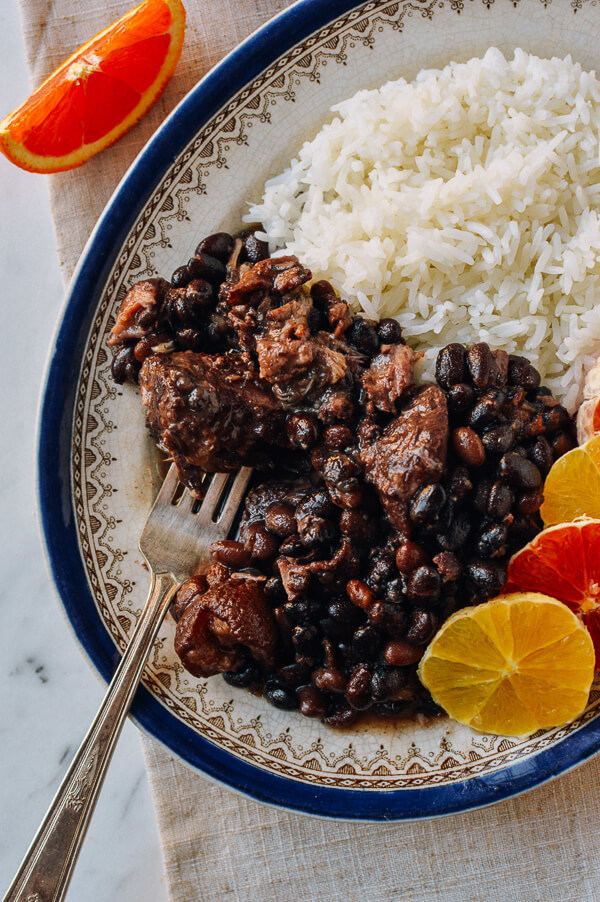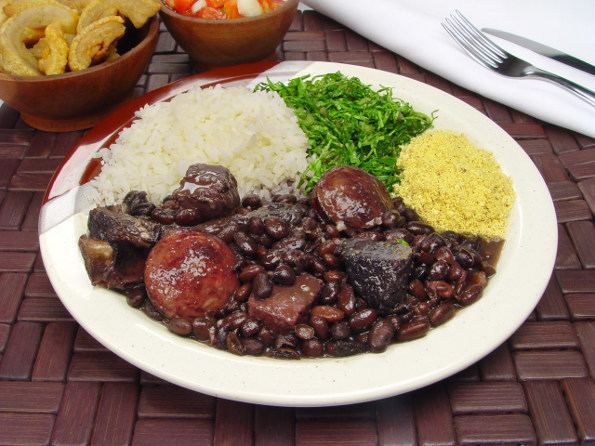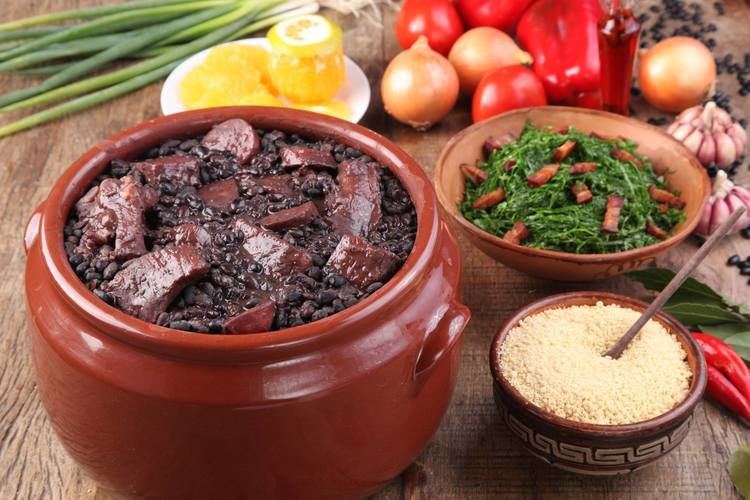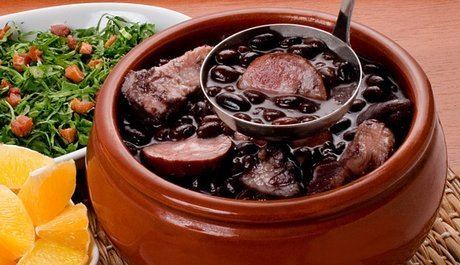Variations typ Main ingredients Bean, Beef, Pork | ||
 | ||
Similar Farofa, Churrasco, Cozido, Moqueca, Linguiça | ||
Brazilian feijoada black bean pork stew recipe
Feijoada ([fejʒuˈadɐ]) is a stew of beans with beef and pork of Portuguese origin. It is also typically cooked in Macau, Angola, Cape Verde, Mozambique, Goa, India and Brazil, where it is also considered a national dish. However, the recipe differs slightly from one country to another.
Contents
- Brazilian feijoada black bean pork stew recipe
- How to make a brasilian pork feijoada homemade by sorted
- Variants
- Brazilian feijoada
- References

The name comes from feijão, Portuguese for "beans".
The basic ingredients of feijoada are beans with fresh pork or beef. In Brazil, it is usually made with black beans; in the northeast (Bahia), it is generally prepared with kidney beans (Feijoada à Brasileira), and includes other vegetables such as tomatoes, carrots, and cabbage. The stew is best prepared over low heat in a thick clay pot.

It is usually served with rice and assorted sausages, such as chouriço, morcela (blood sausage), farinheira, and others, which may or may not be cooked in the stew.
The practice of cooking a meat (pork) stew with vegetables that gave origin to the feijoada from the Minho Province in Northern Portugal is a millenary Mediterranean tradition that can be traced back to the period when the Romans colonized Iberia. Roman soldiers would bring this habit to every Latin settlement, i.e., all of the provinces of Romania, the Vulgar Latin speaking area of Europe (not to be confused with the modern country solely), and this heritage is the source of many national and regional dishes of today's Europe, such as the French cassoulet, the Milanese cassoeula from Lombardy, Italy, the Romanian fasole cu cârnați, the fabada asturiana from Northwestern Spain, near Portugal, and the also Spanish cocido madrileño and olla podrida, not to mention non-Romanic regions with similar traditions that might be derived from this millennial Roman soldiers' dish like the Polish tsholem and golonka.
How to make a brasilian pork feijoada homemade by sorted
Variants

Many modern variants of the dish are based on feijoada recipes popularized in the Brazilian regions of Rio de Janeiro, São Paulo and Salvador. In Brazil, feijoada (feijoada brasileira) is often considered a national dish.
Brazilian feijoada

Feijoada has been described as a national dish of Brazil, especially of Rio de Janeiro, as other parts of Brazil have other regional dishes. The Brazilian version of feijoada (feijoada brasileira) is prepared with black beans, a variety of salted pork or beef products, such as pork trimmings (ears, tail, feet), bacon, smoked pork ribs, and at least two types of smoked sausage and jerked beef (loin and tongue). In some regions of the northeast, like Bahia and Sergipe, vegetables like cabbage, kale, potatoes, carrots, okra, pumpkin, chayote and sometimes banana are frequently added, at the end of the cooking, on top of the meat, so they are cooked by the vapors of the beans and meat stew. This stew is best prepared over a low fire in a thick clay pot. The final dish has the beans and meat pieces barely covered by a dark purplish-brown broth. The taste is strong, moderately salty but not spicy, dominated by the flavors of black bean and meat stew. It is customary to serve it with white rice and oranges, the latter to help with digestion.
Feijão com arroz is the rice and black beans without the addition of the meat.
Depending on the region of Brazil, the type of bean used in feijoada varies. While in some regions like Rio de Janeiro or Minas Gerais, feijoada is typically prepared with black beans, others in Goias and Bahia brown or red is preferred.
As a celebratory dish, Feijoada is traditionally served on Saturday afternoons or Sunday lunch and intended to be a leisurely midday meal. It is meant to be enjoyed throughout the day and not eaten under rushed circumstances. The meal is usually eaten among extended family and paired with an event like watching a soccer game or other social event. Because of the dish's heavy ingredients and rich flavors, feijoada is viewed as Brazilian soul food. In the city of São Paulo, Feijoada is a common dish on restaurants on Wednesdays, mainly in the commercial area. The dish is normally served with a choice among a selection of meats, e.g. pork, bacon, pig ears, pig feet, to fulfill the customer`s needs. Other variations of feijoada, such as the low fat version or the vegetarian. The dish is frequently compared to American Southern Soul Food which share many similarities in terms of ingredients and taste.
According to legend, the origins of Brazil’s national dish, feijoada, stem from the country’s history with slavery. Slaves would supposedly craft this hearty dish out of black beans and pork leftovers given to them from their households. These leftovers included pig feet, ears, tail, and other portions seen as unfit for the master and his family. However, this theory has recently been contested and considered more of a modern advertising technique for the dish rather than a basis for its origins. Instead, scholars argue that the history of feijoada traces back to Brazil’s cultivation of black beans. Because of the crop’s relatively low cost of production and the simplicity of its maintenance, the beans became a staple food among European settlers in Brazil. Although black beans were eaten by both the upper-classes and the poor, the upper-classes particularly enjoyed them with an assortment of meat and vegetables, similar to feijoada, while the poor and enslaved usually ate a mixture of black beans and manioc flour.
